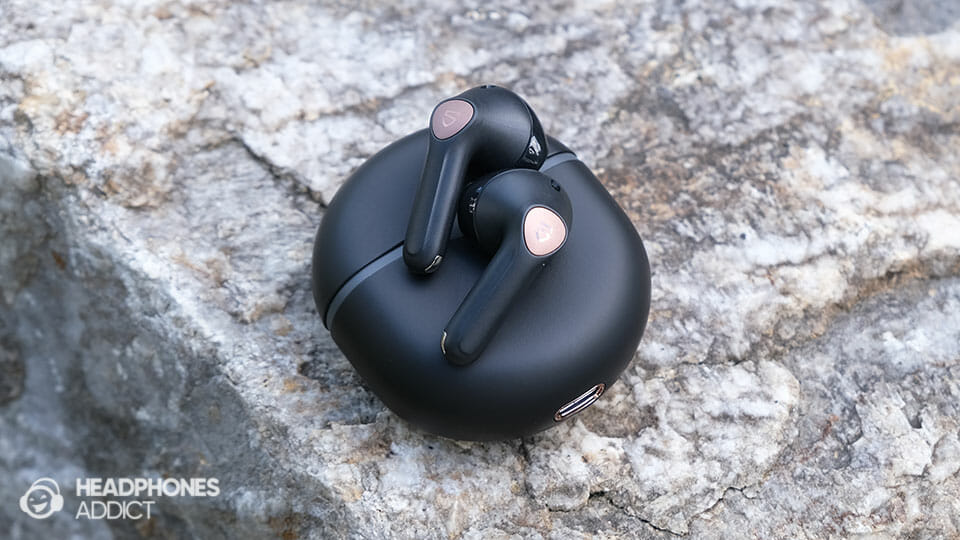
SoundPEATS Air4 are true wireless non-in-ear earphones with quality sound, familiar SoundPEATS ergonomics, and a rather bold feature: active noise cancelling. Sadly, the latter doesn’t work that well, but you must enable it to improve the sound.
The new Air4 is a successor to the Air3 Deluxe and Air3 Deluxe HS models that we enjoy a lot, especially due to their excellent sound quality for the price.
While SoundPEATS Air4 don’t amaze us as much as the models above in the audio department, they’re still a worthy listener.
A slightly bulkier housing makes them better ergonomically. It provides a snugger fit and a more stable wearing experience. Reminiscent of the Apple AirPods 3.
However, the main offender is the $90 price tag. Sure, you get active noise cancellation that the Air3 models lack, but its performance is subpar. More on that below.
The main question is: are SoundPEATS Air4 worth it over Air3 Deluxe HS? Let’s examine the reasons for and against the brand-new model.
Price:
Pros & Cons:
- Full sound that needs some EQ tweaking
- Comfortable & with decently stable fit
- Well-packed with features, Bluetooth multipoint included
- Classic earphone design makes for a subpar ANC performance
- Low battery life at slightly over 4 hours per charge
Category ratings:
Sound

SoundPEATS Air4 have a great sound with rich bass that is rarely heard in classic earphones (non-in-ear). But the mids and treble are too exciting and thin, so they require EQ if you want them to sound natural.
Check the SoundPEATS Air4 – A/B sound test:
Learn how to understand sound comparisons.
It’s nice to see constant improvements in classic earphones’ sound quality. SoundPEATS Air4 are another example that this type of headphones doesn’t need to sound bland and bassless.
Furthermore, the Air4 are the third SoundPEATS earphones in a row to perform better than Apple AirPods 3, even though they’re trying to look up to them (at least design-wise).
However, much like the other true wireless earphones from the brand, these also require some audio equalization to sound the best.
And you have to leave the ANC ON, as it helps improve dynamics. Sadly, with ANC activated, you get a noisy outdoor listening experience. More on that under “noise cancelling“.
SoundPEATS Air4 Frequency Response

Bass: A bit overly boosted but well textured
Out of the box, the bass is a bit too strong and extended into the midrange. The overall result is a full sound that’s somewhat unbalanced.
On the other hand, the sub-bass dives quickly after passing 50Hz, which is typical for this type of headphones. However, compared to a noticeable boost at 60Hz, it, again, creates unbalance.
Lowering the 60Hz, 100Hz, and 200Hz regions in the SoundPEATS app’s EQ helps clean up the bass while retaining the punch of the mid-bass and texture of the instruments, like bass guitars.
One thing that’s still missing from classic earphones is the sense of bass slam and speed. While you can enjoy rock or metal music, the bass kick could’ve had a slightly more tactile tone.
Listen to our audio comparison between our custom EQ and in-app EQ presets:
Midrange: Shouty and thin but fixable with EQ
Midrange frequencies suffer from the biggest unbalance compared to other regions. By default, there are heavy dips and peaks in frequency response all over the place.
You get a slight dip at 800Hz, a massive peak at 1.6kHz, and another dip at 2.5kHz. That results in a thin, occasionally shouty vocal performance and uneven instrumentation.
Interestingly, all major deviations from the neutral target are also represented as frequency bands in the app’s equalizer. SoundPEATS always does that, as if they are precisely aware of the tuning issues.
Fortunately, that means you can easily tackle the biggest issues in the response. After doing so, the sound gets much more natural and fuller.
Treble: Good texture but lacking air
High frequencies are good on their own, despite a small peak at 6kHz. Although, we advise lowering their intensity slightly using our custom EQ.
Cymbals have a natural presence and sizzle but could be slightly more detailed. But that’s understandable, given the price.
They work well with calmer and busier tracks, so you don’t have to exclude particular music from your playlist.
However, compared to the Air3 Deluxe HS, the latter sound so much airier thanks to the energy at 11kHz-12kHz. In comparison, the Air4 sound congested.

The soundstage has slightly more depth than width. It’s not massive, but the music definitely won’t feel trapped in your head.
Imaging is pretty accurate without major blind spots. In tracks like “Letter” from Yosi Horikawa, you can hear the pencil noise panning accurately from left to right.
In conclusion, SoundPEATS Air4 sound good by default and becomes great after applying our custom EQ. They’re another example of good-sounding non-in-ear earbuds with quality drivers and proper tuning.
Here are our custom EQ settings:
- 20Hz = 0dB
- 60Hz = -1dB
- 100Hz = -2dB
- 200Hz = -1dB
- 320Hz = 0dB
- 500Hz = +1dB
- 800Hz = +2dB
- 1.6kHz = -5dB
- 3.5kHz = -1dB
- 7kHz = 0dB
However, they still need to catch up compared to SoundPEATS Air3 Deluxe HS. The latter don’t have as rich bass, but the added clarity and air make them more pleasant.
That said, it depends on what type of music genre you prefer. If it’s more bass-oriented, you will favor a fuller bass from the Air4.
One thing worth mentioning is that the max volume is relatively low compared to Air3 earbuds. So you need to crack it up to about 50% to get regular listening levels.
Comfort & Fit

SoundPEATS Air4 are light and have a very AirPods 3-like design to contour your ears’ shape better, providing a comfortable fit during listening. However, they quickly fall off your head if you start jumping or shaking.
The Air4 have a slightly redesigned shape compared to the Air3 models. While the latter were more circular, the Air4 look more elliptic, like a bean—no wonder they share a strong resemblance to the Apple AirPods 3.

Bean-shaped housing naturally fits into your pinna and provides a larger surface to hold itself in place. More on that later.
Thanks to lightweight construction, you barely feel you have something hanging in your ears. You sense them less than AirPods 3 and even Air3.
All things considered, SoundPEATS Air4 offer fantastic comfort, even if you plan to use them for multiple hours straight.
On the flip side, they could be better at providing a stable fit. As mentioned before, they have a slightly bigger surface area and use glossy plastic on the inner side, which creates more friction than matte plastic from Air3.

In comparison, you get slightly better stability than the Air3 versions, which means you can more confidently take them for an outdoor walk. However, anything more than that can cause them to fly off.
Therefore, you can use the Air4 for casual listening and walking but not exercising (unless you know your ears are super grippy).
Durability

SoundPEATS Air4 feel reasonably sturdy and come in a slightly better quality case than the previous generation. They offer an IPX4 rating, which is splash proof but not waterproof.
Much like everything else, the Air4 also upgraded the overall build quality. While they don’t exactly feel “premium”, they are much better than the Air3 versions.
Earbuds themselves are a bit denser and look sleeker. At first glance, the two models seem to share the same parts. But at a close inspection, the touch area is slightly bigger, and you have a glossy inner part with a bigger nozzle.
Even though the earbuds consist of 4 parts glued together, they don’t seem like they would crack open at the first drop.
Furthermore, you can easily use them for outdoor walking during summer as they offer complete sweat resistance. Be careful; an IPX4 rating means sweat and light rain resistance, not shower or swimming.
The charging case provides a more noticeable improvement. Previous glossy and lightweight cases are replaced with a denser case with a firmer lid.

The lid’s hinge is still plastic and can break if the case falls on the floor while open. But, thanks to stronger magnets, it’s almost impossible for the lid to accidentally open.
Battery

SoundPEATS Air4 lasted 4 hours and 8 minutes of music playback during our battery life test, which is far below average. You get another 20 hours inside the charging case with decent charging speeds.
SoundPEATS Air4 Battery Comparison

The Air4 are noise cancelling earbuds with a small form factor. They have a slightly bigger battery than the Air3 Deluxe (35 mAh vs. 30 mAh capacity per earbud), but also have ANC.
It’s no surprise that the result is mediocre battery life. During our test, playing music at 50% and enabling the ANC, we got:
- 4 hours and 8 minutes of playtime on a single charge.
That puts them slightly ahead of SoundPEATS Capsule3 Pro, which topped at 3 hours and 59 minutes. The latter is the worst result since we started making these tests, making Air4 the second worst.
Disabling ANC extends the total battery life to 6 hours per charge. However, ANC makes the sound more dynamic, so you must decide between better sound and battery duration.
SoundPEATS doesn’t state whether Air4 support fast charging, but they definitely don’t have Qi wireless charging. It takes 1.5 hours to charge the earbuds from 0% to 100%.
Features

SoundPEATS Air4 have a good selection of features that work pretty well, like custom EQ, Adaptive EQ, low-latency mode, and multipoint. However, the addition of ANC seems unnecessary.
SoundPEATS Air4 have slightly more features than Air3 Deluxe HS but less than Capsule3 Pro. Basically, they support active noise cancellation but not ambient sound mode.

If we start with ANC, it seems unnecessary as it simply doesn’t work due to design. You get a small low-end noise reduction. More on that under ANC.
On the other hand, the SoundPEATS app offers:
- Custom EQ: a must if you want to improve the sound.
- A Game mode for reducing latency
- Adaptive EQ to personalize EQ settings.
Let’s start with the latter.
Adaptive EQ
Adaptive EQ works the same way as in other SoundPEATS headphones. You listen to a bunch of frequency tones at various loudness and tap the screen if you hear it.

Based on the results, the app generates your optimal tuning. Unlike with Air3 Deluxe, the final tuning for Air4 didn’t hurt the sound quality.
However, I consistently get loud bass and dark treble. It’s more pleasing to listen to than stock tuning, so it can be a last resort for a person who doesn’t want to fiddle with custom EQ.
Customizable audio equalizer
Custom EQ for the Air4 has 10 frequency bands. As mentioned in the sound category, all bands perfectly correspond to problematic frequencies from our measurement.

While that’s super helpful, you don’t get any extra frequency bands above 7kHz, meaning you’re left with a dip between 10kHz and 13kHz.
So, if you want to perfect the sound even further, you must use third-party equalizers.
Microphone quality
SoundPEATS Air4 have a decent call quality with an audible distortion when speaking in louder places.
SoundPEATS Air4 microphone test: (no noise test from 0:00-0:25, background noise test from O:25-0:47)
Microphone performance is reminiscent of the one from the Air3 Deluxe HS. You get a decent voice quality for phone calls when speaking in a quiet room, with just a slightly muffled and thin voice.
However, when moving to a noisy area, you can hear that the cVc noise cancellation algorithm tries to reduce unwanted sound, but it sadly also creates distortion and further muffles your voice. Others can still understand you, as long as they also aren’t someplace noisy.
Noise Isolation

SoundPEATS Air4 have a mediocre passive noise isolation by design, but that also lets you hear surrounding noise for increased outdoor safety. Also, earbuds have very minimal sound leakage.
As with any classic earphone (earbuds without ear tips), the Air4 are also subpar when blocking outside noise. They do a slightly better job than Air3, but marginally so.

You can still hear most of the lower and higher frequencies, but a hair muted. Meaning that even when you play music, you still hear moderately loud background noise.
On the flip side, you can turn that into an advantage, as hearing ambient noise increases safety while using them outdoors.
What about sound leakage?
Fortunately, sound leakage is kept at a minimum, so you don’t need to worry about others hearing your music.
Noise Cancelling

SoundPEATS Air4 have adaptive active noise cancelling, but because of the semi-open-ear design, it barely does anything. However, it is crucial for the sound quality.
SoundPEATS Air4 active noise cancelling test:
Many true wireless earbuds under $100 have active noise cancelling, and some of them (EarFun Air Pro 3, Edifier W240TN) work excellently.
However, all of those earbuds use ear tips, which help reduce higher frequencies, while the ANC takes care of the lower ones. So, why put ANC in the Air4, which lack an in-ear seal?
The latter is the main issue with implementing ANC into these earphones. Even when it comes to bass frequencies, you barely hear any difference.
It works better if you push the buds deeper into your ears, but by that, you sacrifice comfort. Also, earbuds will quickly fall back into their natural position.

We aren’t sure why SoundPEATS decided to put ANC into Air4. It is probably one of the reasons why earbuds cost $30 more than the Air3.
Unfortunately, it’s vital to enable ANC to get a more dynamic sound. This can be annoying while using earphones outdoors, as ANC mics can pick up wind noise and play it into your ears.
Bluetooth

SoundPEATS Air4 have a decent indoor Bluetooth range of 40 feet, a pretty new aptX Lossless Bluetooth codec (if you support it), and a Bluetooth multipoint connection.
The new Air4 uses the latest Bluetooth 5.3 to ensure a stable, stutter-free connection when your transmitting device is in the vicinity, and you have multiple other wireless technologies in the room.
However, when it comes to longer ranges, it’s all about antennas, and the ones used in these earbuds are about average.
In our Bluetooth indoor range test, we walked through the house, passing a hall and a few brick walls to determine the strength of the connection.
- SoundPEATS Air4 lasted 40 feet (or 12 meters) before cutting the audio off. That was right after passing the second brick wall.
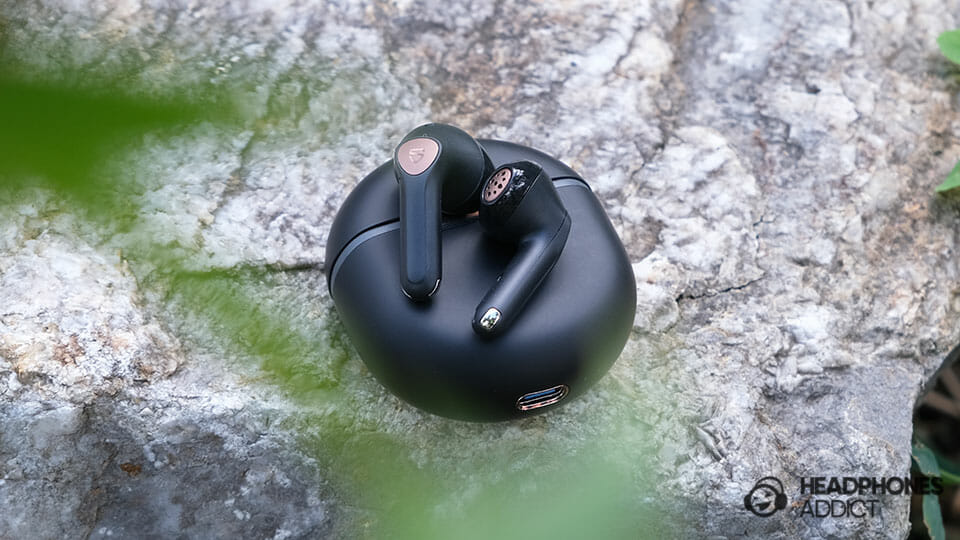
That is still a respectable range and more than strong enough if you want to go from one room to the other. However, compared to the rest, that’s an average result.
What’s great is the support for Bluetooth multipoint.
- Pair the earbuds to two different devices individually.
- First, let them connect to one device. Then activate Bluetooth in the other device and let the earbuds automatically connect to it.
Earbuds’ audio automatically switches depending on which device you start playing audio.
How to pair SoundPEATS Air4?
- The pairing process begins automatically, especially when you open them for the first time.
- Otherwise, earbuds jump into pairing mode if they can’t connect to any device after a few seconds—no need to hold any case buttons.
What Bluetooth codecs do they use?
SoundPEATS Air4 have support for SBC, AAC, and aptX Lossless. The latter is a pretty new Bluetooth codec from Qualcomm and aims to transfer high-quality lossless music (up to 24-bit depth and 96kHz sample rate).
However, your audio device of choice has to support it, which is highly unlikely. We use Samsung Galaxy S21 for our tests, so we’re stuck with regular aptX.
Is there any audio lag?
Video content from social media and platforms like YouTube is free of lag. In contrast, you must use the Game Mode when starting a mobile game to get the best experience, as it lowers the audio latency to 88ms.
While that’s still high enough to see a slight lag, you can comfortably play all types of games, even competitive.
Should You Get SoundPEATS Air4?

SoundPEATS Air4 are definitely among the best classic earphones on the market, but they face intense competition from their own brand.

If you want extra stability and passive noise isolation, Air4 are a great pick among classic earphones. Far better than Apple AirPods 3.
On the flip side, if you want sound quality, SoundPEATS Air3 Deluxe HS have clearer sound and a lower price ($50 compared to $90).
How do SoundPEATS Air4 compare to the competition?
- Earphones have a better audio quality than most other headphones of their type.
- They’re comfier and more stable than classic buds we’ve tested under $100.
- Earbuds offer active noise cancelling, which others don’t (although it barely does anything).
- They have an IPX4 rating, which is on par with most competitors, although cheaper earphones with an IPX5 and IPX8 exist.
- Active noise cancelling is something no other classic earphone has, but it works terribly, as expected.
- The battery life of 4 hours is among the lowest in the “ANC earbuds” category.
SoundPEATS Air4 alternatives
SoundPEATS Air3 Deluxe HS
A better-sounding, cheaper, and longer-battery alternative. A high-resolution version of the Air3 offers a clearer, airier sound that’s more pleasing to listen to. But they lack the full bass punch of the Air4.
The design is similarly comfy but with a matte plastic surface that’s slightly more slippery. Most importantly, they cost $50, $40 less than Air4.
EarFun Air Pro 3
You get a much fuller, punchier sound thanks to using silicone ear tips. The sound is also more natural (after some EQ).
Earbuds have superb active noise cancellation, transparency mode, long battery life of 8 hours, Qi wireless charging, better stability, etc. And they cost $10 less.
Edifier W820NB Plus
These are a good over-ear alternative with a balanced sound signature and decent detail retrieval. They’re light, comfy, and offer decent features like ANC and ambient sound mode.
Furthermore, headphones have a beefy 33.5-hour battery life with fast charging and good mic quality. What they lack is a carrying case and ear breathability, so you’ll quickly start sweating.
What’s in the Box?

- SoundPEATS Air4 true wireless earbuds
- Charging case
- USB-C cable for charging
- User guide
Specifications
| Type: | True wireless |
| Connection: | Bluetooth 5.3 |
| Back design: | Closed-back |
| Drivers: | 13mm dynamic |
| Frequency range: | n/a |
| Impedance: | n/a |
| Weight: | 0.14 ounces (4 grams) |
| Mic & Controls: | Yes |
| Water resistance: | IPX4 |
| Battery life: | 4h + 20h in case |
| Charging time: | 1.5h (for buds) – USB-C |
| Active noise cancelling: | Yes. adaptive |
| Bluetooth codecs: | SBC, AAC, aptX Lossless |
| Wireless range: | 40 feet (12 meters) |
| Microphone: | 6 mics for calls |

From a childhood fascination with sound, Peter’s passion has evolved into a relentless pursuit of the finest headphones. He’s an audio expert with over 5 years of experience in testing both audiophile and consumer-grade headphones. Quote: “After many years, I can confidently tell which headphones are good and which are terrible.” Find his honest opinion in his reviews.








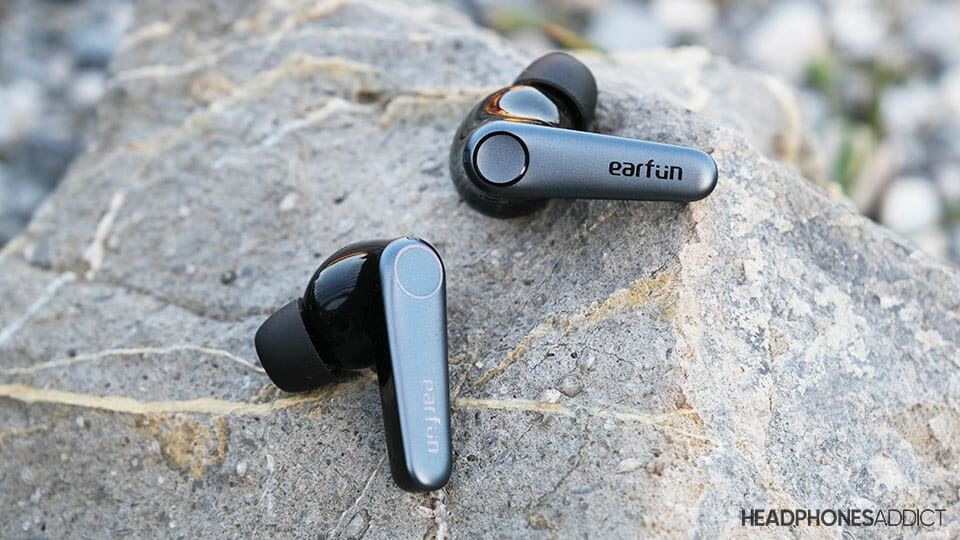
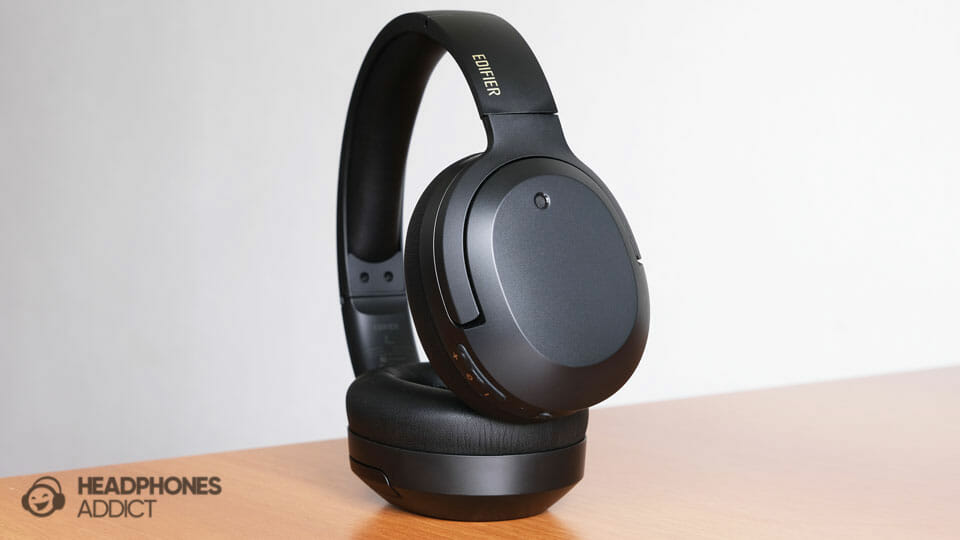
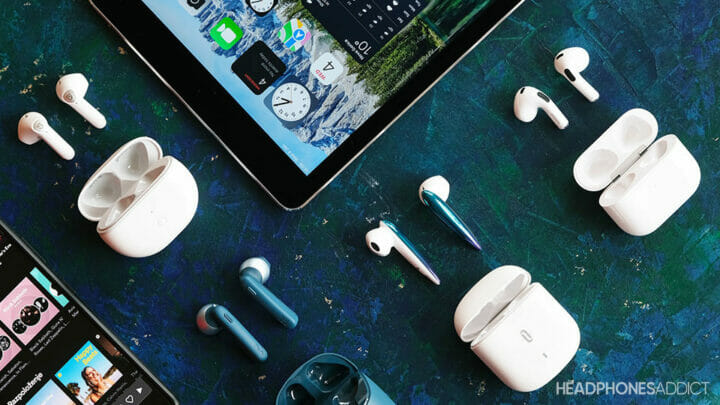
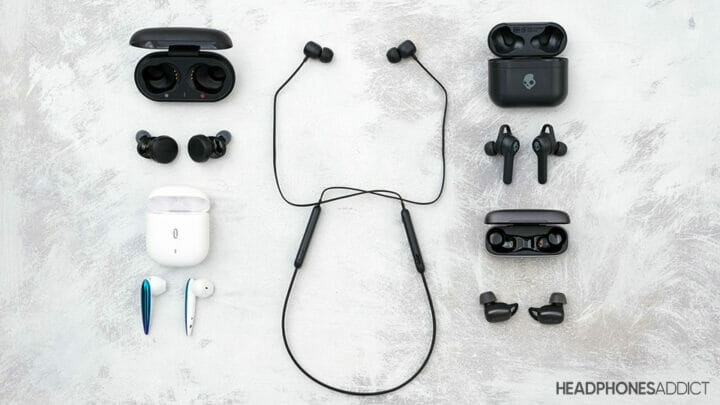
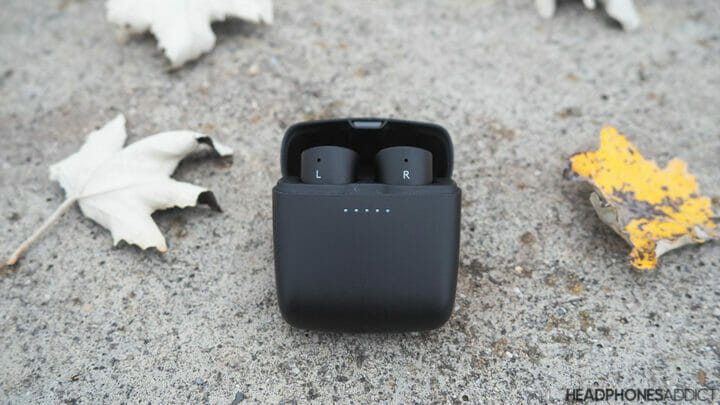
2 Comments
Joseph
Hi, I am interested to know what will be your EQ settings for 10 and 13kHz?
Peter Susic
Hello Joseph,
I would personally prefer more energy between 10-13kHz, lower the existing peak at 13-14kHz, and again add more energy at 16kHz. Basically, I would boost the treble more evenly, which would, hopefully, add some airiness and texture into the treble.